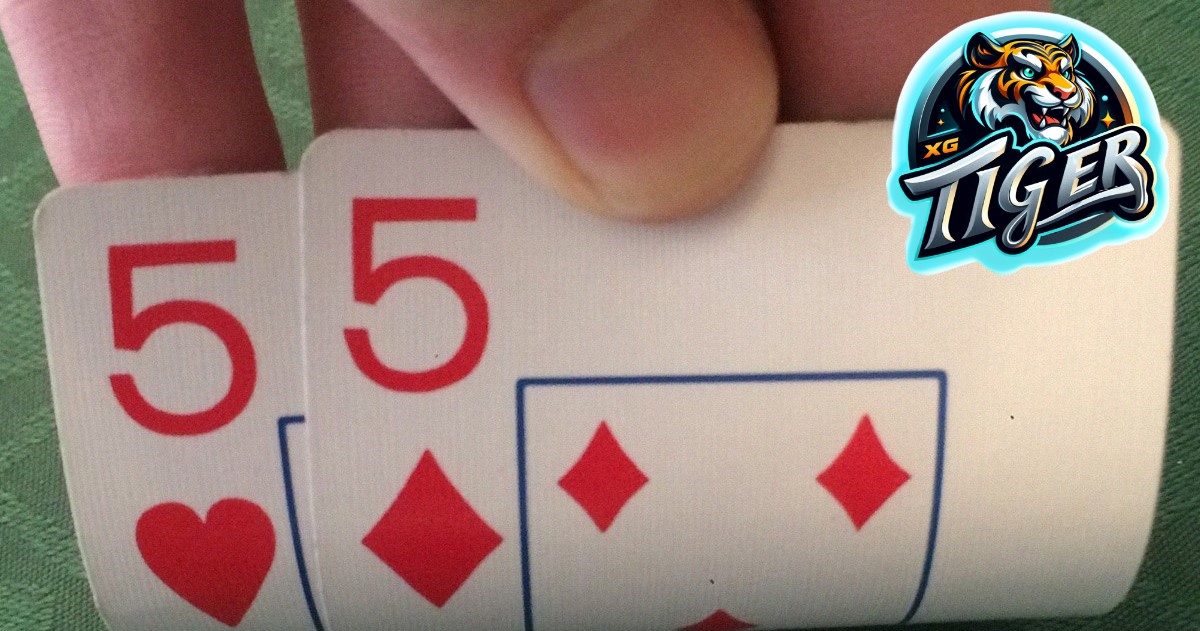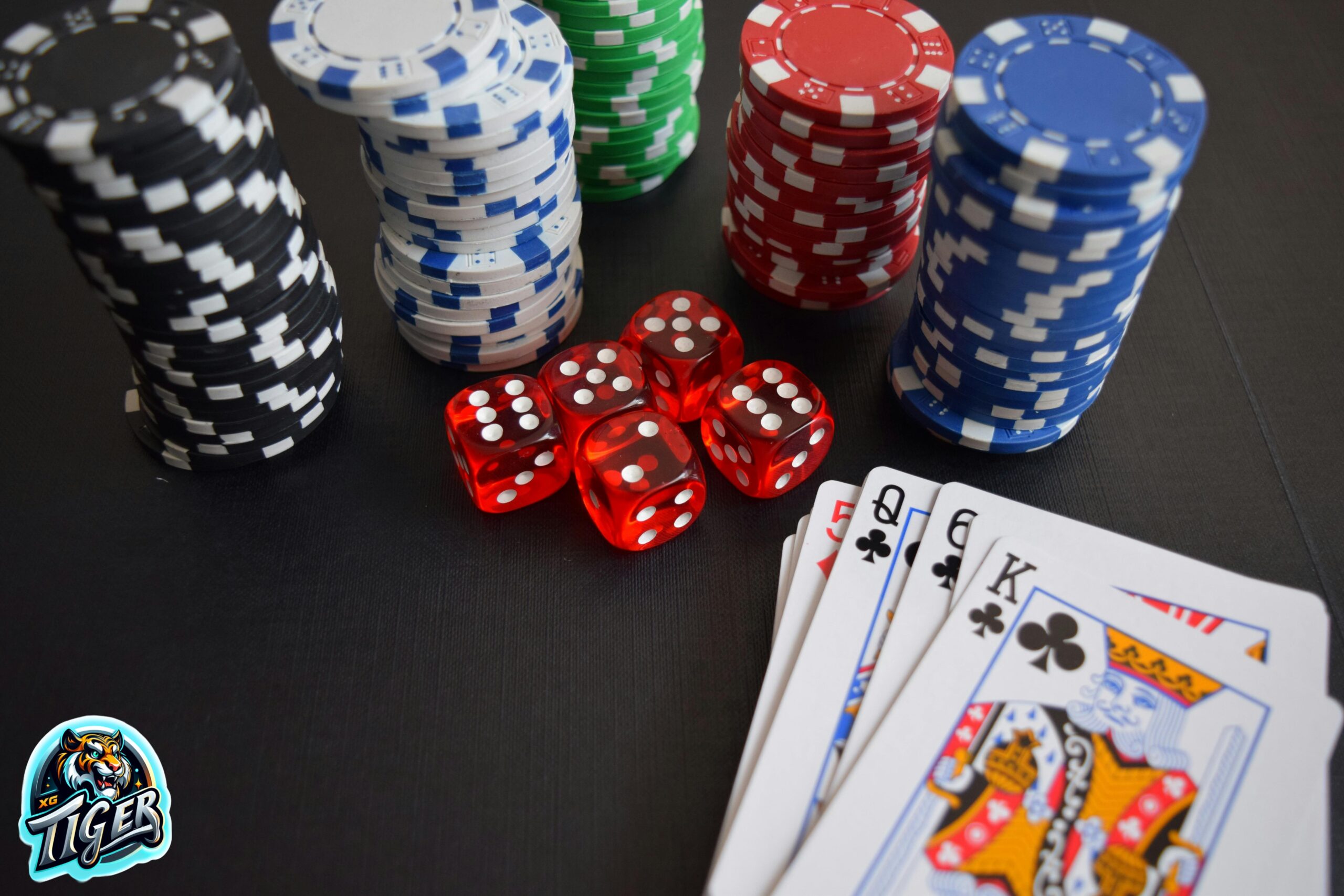Table of Contents

Unopened Jars
Pocket Fives are among the top 7% of all starting hands.
You should always raise with Pocket Fives Xgtiger Casino pre-flop when the action folds to you in a 6-max game. If you’re at a 9-handed table, the best baseline strategy is to fold Pocket Fives from the 3 earliest positions (UTG, UTG+1, and UTG+2). If your table is very passive or the rake is very low, you may consider loosening up from early positions.
Against an Increase
When it comes to playing Pocket Fives against the raise, your position is a very important factor.
Let’s list them one by one. Here are the table positions for your reference:
From the Big Blind: You want to call every time with Pocket Fives. The pot odds you are given due to your mandatory pot investment are very attractive to call, despite playing out of position with a high stack-to-pot ratio.
From the Small Blind: Cold calling from the Small Blind in cash games is almost always a losing game (assuming you are in a game with normal table rake(. For this reason, 3 -just bet from this position.
But if you’re against an early or middle raising position, 3-betting Pocket Fives will be too loose. So, you should only 3-bet from the Small Blind when facing an open from the Cutoff or Button. You should only fold in other cases.
From the Button: The Button is a special position because you are guaranteed to be the last player to act after a flop. This positional advantage increases your ability to achieve equity. Because of all this, you are strongly encouraged to have a calling range against other positions. Pocket Fives is the perfect type of hand to call from the Button because it doesn’t play well against the 4-bet and is too strong to fold.
From the Rest: From other positions, Pocket Fives are not strong enough to cold-call or 3-bet because the open-raising range of the “GTO” is too strong. Of course, if you’re up against a loose player, then cold calling or 3-betting are probably your best options because you’ll have more equity against them. You might also consider cold calling more often if the players behind are tight and you’re unlikely to be squeezed out of the 3-bet pot.
Against a 3-Bet
When faced with a 3-bet, both your position and your opponent’s position are important.
When you are especially out of position, you should mix between calling and folding with Pocket Fives. That said, always calling or always folding are very difficult to exploit in these situations, so it won’t make much of a difference either way. That’s just the nature of close quarters poker.
When you’re in position against a 3-bettor, you can always call with Pocket Fives. The exception is against a short-stacked opponent or an oversized 3-bet.
Against a 4-Bet
When faced with a 4-bet, Pocket Fives is a marginal hand. They are very close to 0 expected value in equilibrium. That said, if you’re not facing a big 4-bet, your opponent is loose on his 4-bet, or you’re playing deeper than 100bb, then calling can be profitable.
I’m willing to bet that most people reading this won’t play the opponents 4-bet aggressively, in which case you should probably just give up your Pocket Fives against a 4-bet.
3 Tips for Pocket Fives in Single Raised Pots as a Preflop Raiser
These tips are for when you raise preflop with the Five ball and exactly one player is called.
Tip #1: Never slow-play a flopped set
Do you like the feeling of winning your opponent’s entire stack? If you do this, you should NEVER slow play your flopped sets (in single raised Pots).
What you need is to build towards putting your opponent all-in on the river (or earlier) if possible. Failure to do so (by playing slowly) will cause you to win a fraction of what you could have won. Or worse, get a bad beat with some more dramatic backdoor straight fold against your bet or check-raise on the flop.
Tip #2: If you flop an underpair in position, it’s generally best to go back
Without going too deep into the technical underpinnings of this tip, the basic idea is that you flopped a weak hand to your underpair.
You won’t make a lot of money with this so it’s usually a good idea not to put money in the pot at all unless there is some compelling factor, such as having a draw to back it up. And even then, you shouldn’t be itching to fire up pot bets. Better you check and (if faced with a bet) call.
For example, suppose you are on the Button and the Big Blind calls your open-raise. If the flop comes and the Big Blind checks, you must return to your Pocket Fives.
Tip #3: When you open-raise from Small Blind and Big Blind calls, always c-bet double Broadway flops
Double Broadway flops are very favorable for the Small Blind in these situations.
As a preflop raiser, the Small Blind has a range advantage along with a nut advantage on flops like K-Q-2. With both advantages in your corner, you should press the action very aggressively by c-betting your entire range with a block bet size (~33% of the pot). Your Pocket Fives will be protected by so many other better hands that your opponent will not be able to exploit you.
So, if the board is like K-J-6, K-Q-3, or A-Q-7, you should always fire a small c-tay in your blind vs. blind battle.
3 Tips for Pocket Fives in Single Raised Pots as a Preflop Caller
Tip #1: When out of position, you should call a bet when you flop middle pair
Middle pairs are usually very good bluff-catchers. The main action you want to take with these hands is to check the call.
For example, if you’re defending from the Big Blind against the Button, the flop comes and you’re facing a 33% pot bet, you should check-call every time. If you face another bet on the turn, you can drop it afterwards. But you can’t let your opponent drop the pot with a small bet on the flop.
Tip #2: When you’re in position and being checked by a preflop raiser, you should check to see if your Fives are middle pair or underpair
This tip goes hand in hand with the one from the previous section. You flop a weak hand that just wants to show down or improve on a set or some backdoor straight once in a blue moon. Don’t put money in the pot if you don’t have to.
So, if you call from the Big Blind against a Small Blind open-raise, and the flop comes a similar, you should go back to your Pocket Fives.
Tip #3: On medium or low paired flops, occasionally check-raise the Big Blind
Flops like 9-9-3, 8-8-4, and 6-6-2 miss most of your opponent’s range, so you can attack c-bets on these types of flops with an aggressive check raising strategy.
On these boards, Pocket Fives is usually the best hand, but it is a very weak hand. This makes it a great hand to include in your check raising range every once in a while.
By check-raising to Fives, you deny some of your opponent’s equity while still getting a large portion of worse hands (like Ace-high) to call. The best way to achieve this is to make a small raise designed to make the opponent fold many of their weakest overcard hands, while also getting value from stronger callers.
Final Thoughts
Presto! You have now learned how to play Pocket online poker Fives better than most of your opponents in less than 5 minutes. Make sure to be consistent and keep printing money in every single place.
Let me know which hand you want me to make a quick guide on next in the comment section below!
Until next time, good luck, grinders!
Conclusion
Are you an avid gaming fan and want to know how to bet on online casino games? At Xgtiger, you’ll get the latest information on this year’s best casino games and a variety of gaming options, all in one place.
To start your online gambling journey, all you need to do is create an account on the site, deposit funds and you’ll be ready to bet on the best and most anticipated casino games.



